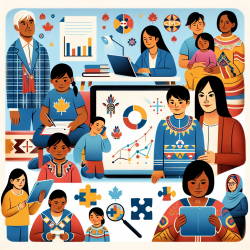The study underscores several key findings:
- Underrepresentation in Data: Indigenous communities are often excluded from national surveys, leading to a lack of accurate prevalence data.
- Cultural Barriers: Indigenous views on health and wellness differ significantly from Western medical models, which can impede effective diagnosis and treatment.
- Systemic Obstacles: Historical and ongoing colonial practices have created systemic barriers to accessing health services.
For practitioners at TinyEYE, these findings offer actionable insights:
- Enhance Cultural Competence: Invest in training that emphasizes understanding and respecting Indigenous perspectives on health and wellness.
- Collaborative Research: Engage with Indigenous communities in participatory research to gather accurate prevalence data and develop tailored interventions.
- Advocate for Policy Changes: Work towards policies that ensure equitable access to diagnostic and therapeutic services for Indigenous populations.
Implementing these strategies can significantly improve outcomes for Indigenous children with ASD. By fostering partnerships with Indigenous communities and respecting their unique cultural contexts, practitioners can offer more effective and meaningful support.
To read the original research paper, please follow this link: Frozen in Time, a Focused Review of Autism Prevalence in Canadian Indigenous Communities.










